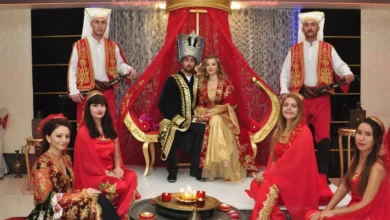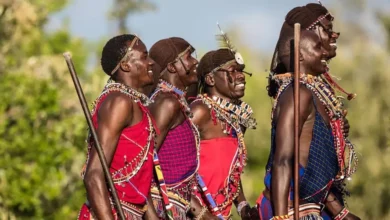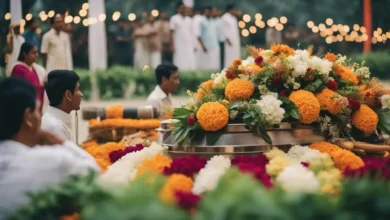Bhutan, the Land of the Thunder Dragon, is a nation rich in culture, tradition, and spiritual heritage. Central to its identity are the national dress, the Gho for men and the Kira for women. These garments are not just clothing; they are integral parts of daily life and play a significant role in Bhutanese Buddhist rituals. This article explores the history, significance, and practical aspects of the Gho and Kira, focusing on their use in various sacred contexts.
Understanding the National Dress of Bhutan
The Gho and Kira aren’t simply fashion statements; they are powerful symbols of Bhutanese identity, unity, and reverence. Let’s break down what each garment entails.
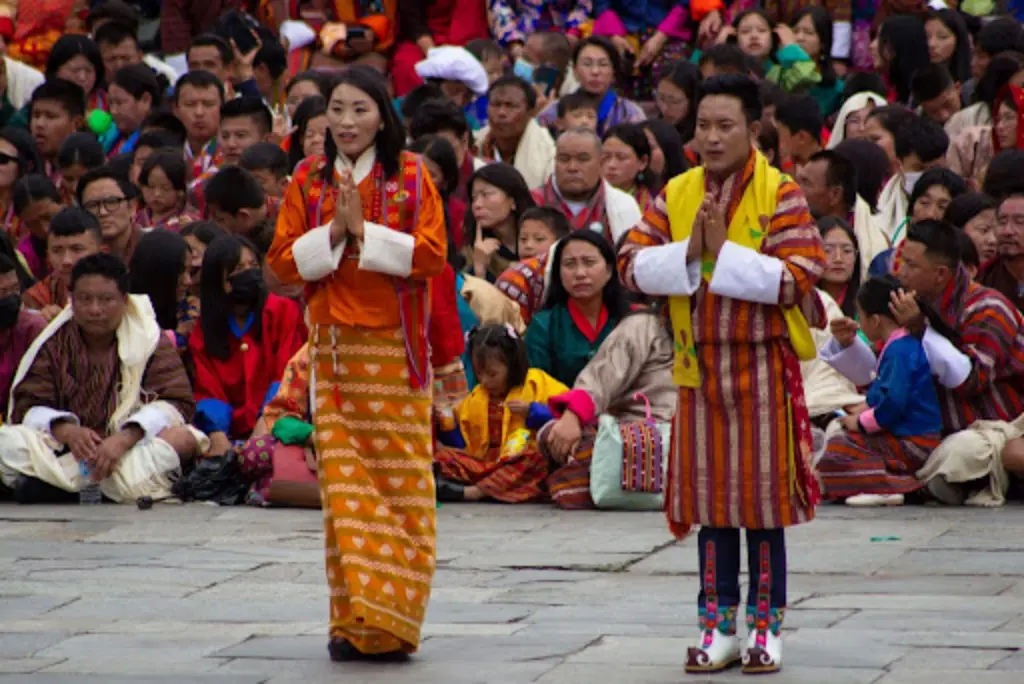
The Gho: A Symbol of Masculine Identity
The Gho is a knee-length robe, typically worn by men. It’s traditionally made from woven cotton or wool fabric and is secured at the waist by a belt, known as a kera. The Gho has a distinct, boxy shape, achieved by folding the excess material at the back to create a large pouch in front.
This pouch was historically used for carrying items, demonstrating its practical origins. Today, it often serves as a convenient place to keep personal belongings, and in some cases, it is also a symbol of national pride and identity. The traditional Gho is usually unadorned, but more elaborate versions, often made of silk and adorned with embroidery, are used for formal events.
See also The Hanbok’s Role in Korean Ancestral Rituals – Jesa
The Hanbok’s Role in Korean Ancestral Rituals – JesaKey Features of the Gho:
- Construction: Made from woven fabric, usually cotton or wool.
- Length: Knee-length.
- Securing: Fastened with a belt (kera) at the waist.
- Pouch: A distinctive pouch created by folding excess fabric at the front.
- Variations: Simple daily wear to more elaborate, embellished formal wear.
The Kira: An Emblem of Feminine Grace
The Kira is a rectangular piece of woven cloth that women wear, wrapping it around their bodies and securing it at the shoulders with silver brooches (komas) and at the waist with a belt. Unlike the Gho, which is a single piece, the Kira may consist of several pieces of fabric, particularly for formal wear.
The most common type of Kira is the tara, which is typically a single rectangular piece of fabric. There are also variations such as the kushutara, a more elaborate Kira often worn for special occasions, and the wonju, a blouse worn underneath the Kira.
The Kira emphasizes modesty and grace, reflecting the values of Bhutanese culture. The weaving techniques used to create Kiras are varied, from simple patterns to complex designs, often containing symbolic meanings passed down through generations.
See also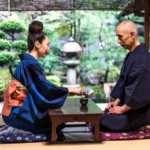 The Kimono in Japanese Tea Ceremonies and Festivals
The Kimono in Japanese Tea Ceremonies and Festivals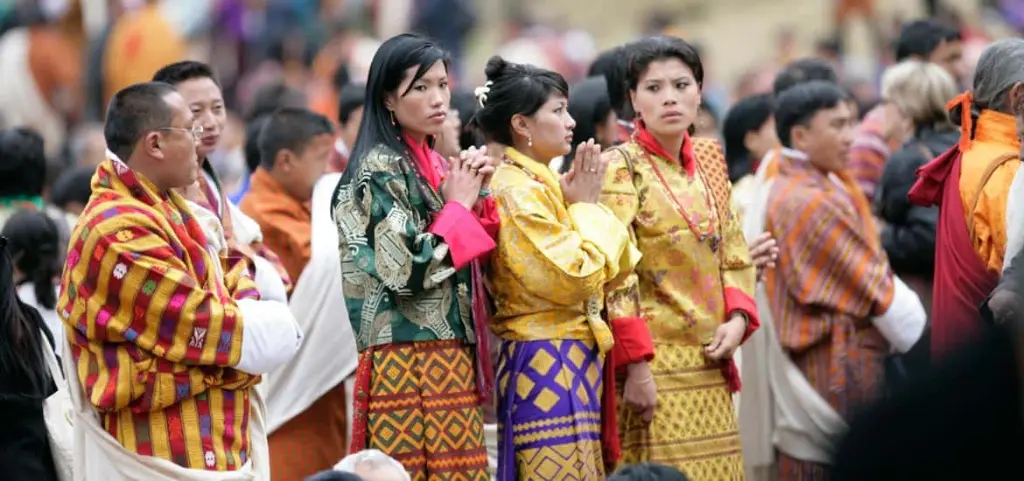
Key Features of the Kira:
- Construction: Rectangular piece of woven fabric, often patterned and colorful.
- Securing: Fastened at the shoulders with brooches (komas) and at the waist with a belt.
- Layers: Often worn with an inner blouse (wonju) and a jacket (tego) in cooler climates.
- Variations: Different types for everyday use and formal occasions, such as the Kushutara.
- Weaving: Traditional patterns and techniques, often carrying symbolic meaning.
The Gho and Kira in Bhutanese Buddhist Rituals
Beyond daily wear, the Gho and Kira play a crucial role in Bhutanese Buddhist rituals and ceremonies. Their use in these sacred settings underscores their importance in Bhutanese spiritual and cultural life.
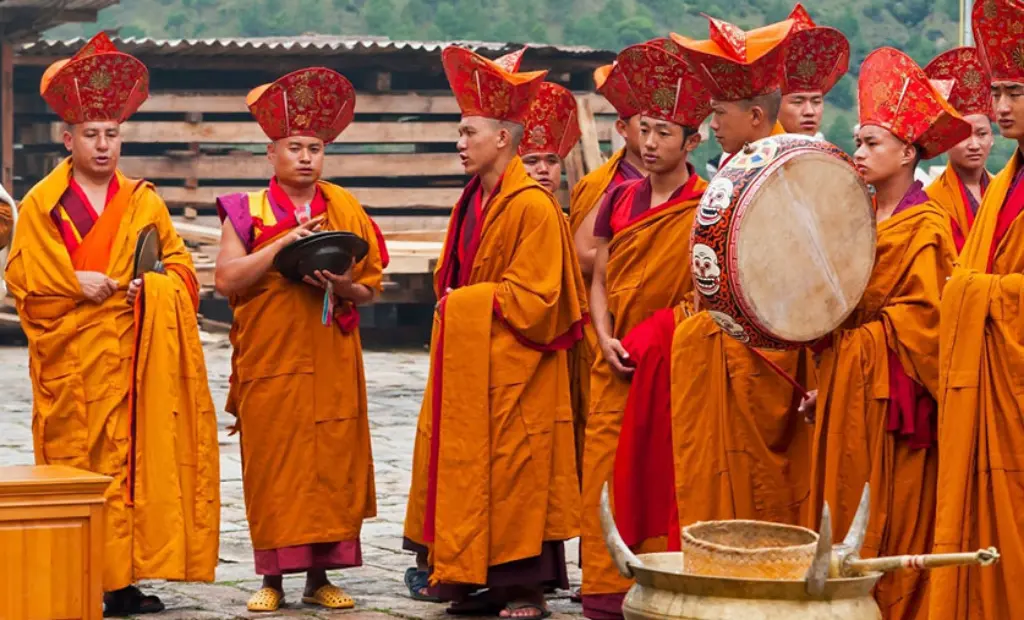
Respect and Reverence
Wearing the Gho and Kira during religious rituals is a sign of respect and reverence for the deities, monks, and the sacred space. When entering a monastery or temple (dzong), individuals are expected to be dressed in their national attire, demonstrating their respect for the spiritual environment. The act of wearing these garments signifies a mindful transition from the secular to the sacred realm.
Monastic Dress and the Gho
While lay individuals wear the Gho as described earlier, Buddhist monks and religious practitioners also wear a similar style of robe, but typically in maroon or saffron colors, depending on the monastic order. Their robes are also tied with a belt, but with slight variations in style. They often wear an additional shawl-like cloth called a shamthap and a Zen-like inner robe, highlighting their devotion to a life of simplicity and spiritual practice.
Ritual Attire and the Kira
Women participating in religious ceremonies, such as attending a tsechu (religious festival), wear their best Kira. The complexity of the weave, the richness of the colors, and the adornment with silver brooches all contribute to the sense of occasion. These Kiras are often family heirlooms, passed down through generations, and hold significant cultural value. The act of wearing a special Kira for these rituals is a display of both personal devotion and cultural identity.
The Significance of Colors and Materials
The colors and materials used in both the Gho and Kira often carry symbolic meaning in a ritual context. For example, white is often associated with purity and is sometimes used during religious ceremonies. Certain colors may be preferred for particular festivals or for specific religious practices. Additionally, the quality of the material can indicate social status and the importance of the occasion. The use of silk, for instance, often signifies a formal occasion.
Specific Rituals and the Role of the Gho and Kira
The Gho and Kira are not merely attire; they are active participants in various Bhutanese Buddhist rituals. Here are some key examples:
Tsechus (Religious Festivals)
During tsechus, masked dances are performed by monks and lay practitioners, all wearing the national dress, although adorned for the specific roles they play. The Gho and Kira are often embellished with intricate embroidery or other decorations reflecting the particular deities or figures being represented. Attendees also wear their best attire to witness these sacred performances, fostering a collective display of cultural and religious pride.
Weddings and Other Ceremonies
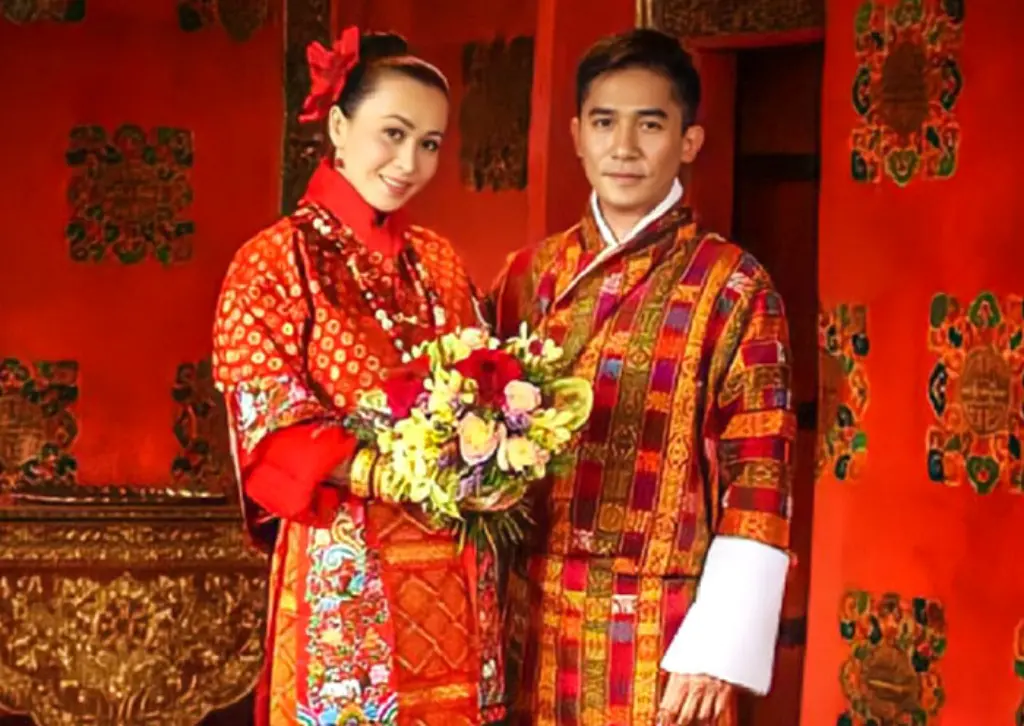
In weddings and other significant life events, the Gho and Kira are paramount. Men and women often wear more elaborate versions of the national dress, signifying the special nature of the occasion. The colors and styles may differ, signifying the individual’s background or regional traditions, all while maintaining the core elements of the national dress. These garments connect the event to the broader cultural and spiritual traditions of Bhutan.
Pilgrimages and Offerings
When visiting sacred sites, the Gho and Kira ensure a sense of decorum and mindfulness. Whether making offerings at a lhakhang (temple) or circumambulating a stupa, pilgrims wear their national dress as a way to honor the spiritual setting and express their devotion. The choice of garment communicates a respect for the sacred space and a commitment to the religious practices.
Maintaining Tradition in Modern Bhutan
Despite modernization, the Gho and Kira remain integral to Bhutanese identity and practice. The government mandates their wear during office hours and in public functions. This effort has played a crucial role in preserving the country’s unique cultural heritage. Even with contemporary fashion trends, many Bhutanese maintain the tradition of wearing the Gho and Kira in their daily lives, demonstrating the enduring significance of these garments.
Preservation Efforts
Various initiatives support the continued practice of weaving the fabrics for the Gho and Kira. These initiatives include programs that train young artisans in traditional weaving techniques, and organizations that promote fair trade for weavers. The preservation of these skills is crucial in maintaining both the traditional attire and the economic well-being of rural communities.
Modern Adaptations
While adhering to traditional designs, there have been slight adaptations of the Gho and Kira to suit modern lifestyles. For example, some contemporary versions use lighter fabrics and slightly modified cuts to provide greater comfort and practicality. However, the core components and their symbolic meaning remain unchanged, ensuring the continuity of this important cultural practice.
The Gho and Kira are much more than pieces of clothing; they are embodiments of Bhutanese culture, spirituality, and history. Their presence in Buddhist rituals underscores their profound significance in the nation’s religious and cultural landscape.
From everyday life to significant ceremonies, the Gho and Kira symbolize a deep connection to tradition, and to the spiritual roots of Bhutanese society. By understanding the importance of these national garments, we can appreciate the rich cultural tapestry that defines this unique Himalayan kingdom.“`

